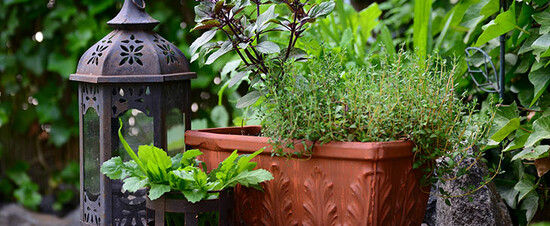After a cold and long winter, being able to spend time outside without a hat or a jacket is a special (and well-deserved) pleasure. The return of insects, on the other hand, is an unpleasant part of the warmer weather. Most people take significant measures to push them away and enjoy the sun in peace. Although there are various topical mosquito repellents, as well as sprays and natural oils, surround yourself with repellent plants for an extra level of protection. Find out what are the most effective and easy to grow varieties in the lines below!
The easiest repellent plants to grow in your garden or pots
Fill your garden with the best mosquito repellent plants and you won't have to worry about being bitten by a mosquito on a hot summer night. Indeed, you can reduce the number of all annoying insects by choosing to fill your exterior with plants that act as a natural deterrent.
Those who do not respond to the bites of common insects are a few. Some people experience a small red bump, while others experience a more severe reaction. In any case, it's an annoyance we can all do without, and the good news is that you can keep these pests out of your yard and away from people this summer. Flying bug control may be as simple as figuring out how to get rid of ants in your flower beds.
The science is simple. The aromatic oils contained in the leaves of some plants repel insects masking the human smell that attracts them. Breaking or crushing the leaves, or, in the case of sage, chopping off a tiny clump and placing it on the barbeque to generate a fragrant smoke that repels bugs, can intensify the impact. Other plants produce a strong enough smell to deter creatures just by being present.
Basil
Basil has four chemicals that repel mosquitos, making it one of the most effective mosquito repellent plants. To achieve the greatest results with basil, keep in mind that it loves warm weather, so grow it on a sunny windowsill and move it outside when the weather allows. Instead of watering the leaves, keep the soil moist and use homemade compost around the plant. Always remove the leaves from the tops of the stems to encourage a bushier shape and abundant new growth.
Lemon balm
This herb contains a compound called citronellal which gives a strong and unpleasant aroma to insects. The result is quite effective when the leaves are picked, then gently crushed and wiped on the wrists and ankles, areas where the pests like to bite. Easy to grow, this perennial is perfect for pots or garden beds. Keep it well-watered and away from the direct, hot sun.
Lavender
Wondering how to grow lavender? It contains up to 25% of a non-toxic compound called linalool, which is supposed to interfere with mosquitoes' ability to smell their human hosts. It's also a low-maintenance plant that looks great in beds, and pots. Full sun, well-drained soil, and light pruning at the right time are all you need to keep the plant happy.
Mint
For optimal repellent properties, choose peppermint over spearmint since it contains more menthol (40 percent vs. 0.5 percent). Mint is invasive and will take over your beds, so discover how to grow it in a pot. It flourishes in partial shade, and you should prune it back to encourage new growth. What is our best piece of advice? Crush several handfuls of mint leaves and combine them with rubbing alcohol to make a natural mosquito repellent spray. Before using, pour into a spray container and mix well.
Sage
Common sage is particularly effective at repelling mosquitoes when tied in a bouquet and burned in the fire pit or on the barbecue, where it releases aromatic smoke. Sage requires a sunny location and well-drained soil. Prune it after it blooms in the spring, but avoid pruning it in the summer or fall. Green sage is the most common variety, but purple sage is a nice addition when planted in beds. Remember that plants should be replaced every four or five years.
Marigolds
Many of us cultivate marigolds for their bright colour rather than their scent, yet it is their delicate aroma that makes them such an effective insect repellent. They contain a compound called pyrethrum, which is used in commercial insect repellents. These lovely annuals are easy to raise from seed: simply scatter them in the ground at the end of May, or start them indoors six weeks before the final frost. They're good for pots, which you may use to keep biting pests away from your outdoor seating.
Chrysanthemums
If you're looking for seasonal flowers that help keep insects away from the rest of your plants and yourself, chrysanthemums are a good option. Surprisingly, they naturally contain an insecticide that repels insects and even kills them. Chrysanthemums make wonderful border plants and also help keep flies, spiders, and other pests away. You can also grow them in pots if you are limited by space.
Thyme
Thyme is a fantastic seasonal herb to grow if you're having difficulty with bugs on your veggies. It repels a variety of insects, including the whitefly, and keeps pests out of your salads. You may also use lemon thyme to keep insects away from your garden. It will work best if you softly bruise the leaves to release the intense citrus fragrance. This is best done early in the evening when the bugs are most likely to fly.


Comments
There are no comments yet. Login or Register and write an article comment